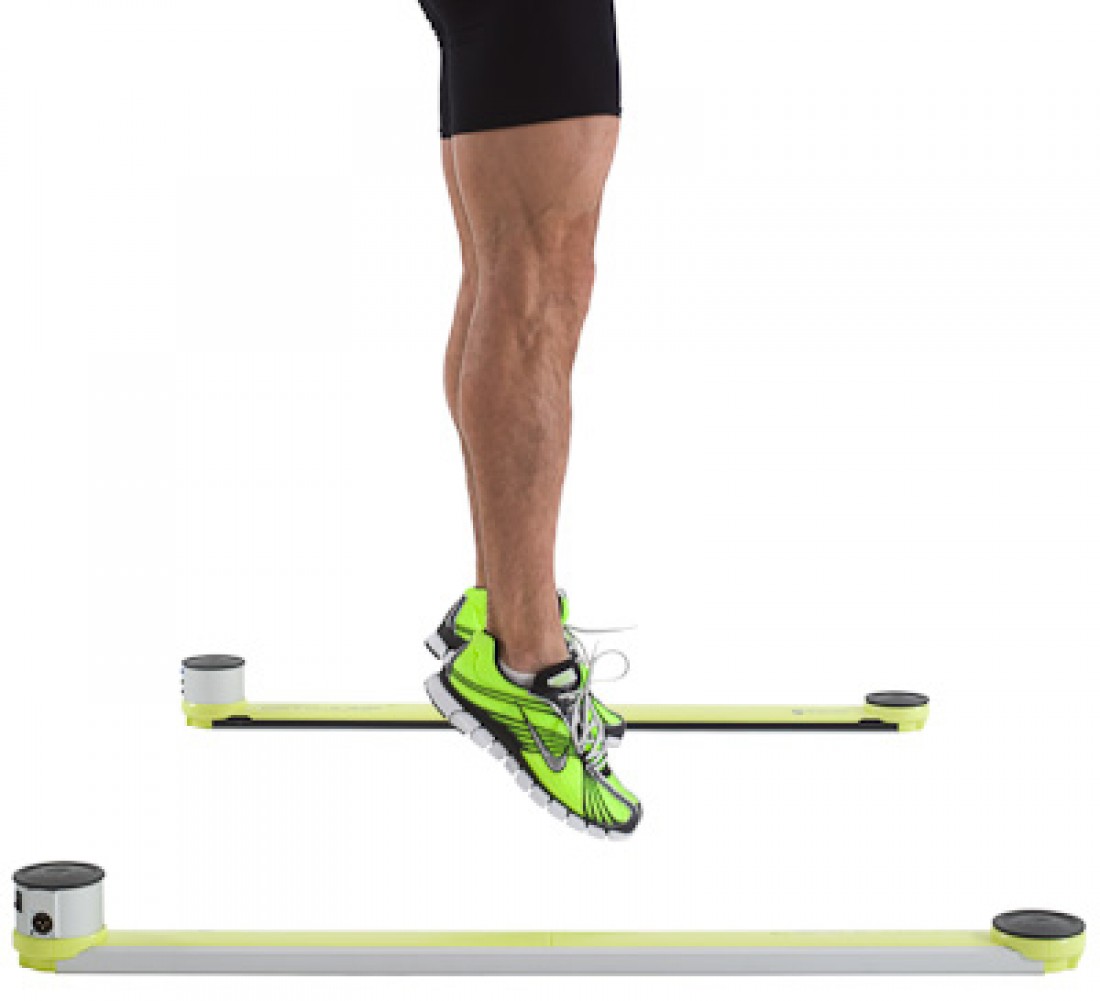
Written by Soccer Fitness Staff member Alexandra Giannone, edited by Richard Bucciarelli.
The drop-jump test is a vertical plyometric exercise that is used to evaluate an individuals
explosive power (Ebben & Petushek, 2010) as well as a measurement of their eccentric leg
strength and agility.
To perform a drop-jump one must stand on box, with one foot hanging off the edge and their hands on their hips. The individual will then step down, hitting the ground with both feet, once contact with the ground is made they must then rapidly explode and jump up
as high as possible.
For a more explosive jump it is crucial for them to utilize their stretch shortening cycle (SSC) to its full capacity. When the eccentric/concentric phases of a movement are coupled, a more powerful contraction is produced. During the eccentric phase, active muscles are pre-stretched and absorb energy. Part of this energy is temporarily stored and then reused during the concentric contraction phase of the SSC. A short transition between the eccentric and the concentric phase is necessary for this elastic energy to be used optimally (Flanagan & Comyns, 2008).
The ground contact time in these plyometric exercises are an important variable for strength and conditioning. Athletes that wish to increase maximum jump height can benefit from longer ground contact times, allowing them to generate maximum force and maximum jump height. However, an athlete that needs to improve their maximum velocity sprinting speed would require the plyometric exercise to have shorter contact times.
Examining the ground contact times of an athlete during these plyometric exercises will give a coach/trainer an excellent indication of whether the exercise being performed is beneficial to the athletes’ specific sport. In a recent study examining the use of the drop jump, male athletes were found to have had shorter contact times, and produced the highest maximum and and mean mechanical power, as compared to female athletes (Walsh, Arampatzis, Schade, & Brüggemann, 2004).
To evaluate an individual’s drop jump performance and explosive strength, their reactive
strength index (RSI) must be measured (Ebben & Petushek, 2010). RSI is equal is jump height (JH) divided by contact time (CT) (RSI = JH/CT). CT is defined as the time between the first foot contact with the force platform and when the subject’s feet left the platform. JH is characterized as the time between the subjects feet leaving the force platform and when they contacted it again (Stephenson, Ebben, Flanagan, & Jensen, 2011).
Drop jump and reactive strength index can be assessed using a variety of methods. At Soccer Fitness, athletes have the opportunity to be assessed using OptoJump, an
innovative system analysis and measurement, consisting of a transmitting and receiving bar. The system detects any interruptions in communication between the bars and calculates duration (ex. jump height and contact time) A system like this allows for assessment and optimization of performance to the world of competitive sport (Microgate, 2014).
Agility is a term that is very controversial due to the result of multiple factors and various
disciplines in sports science. A biomechanist, a motor learning scientist and a strength and conditioning coach can all have different perspectives as to what influences agility performance. A comprehensive definition of agility would recognize the physical demands (strength and conditioning, cognitive processes (motor learning) and technical skills (biomechanics) (Sheppard & Young, 2006).
In order to assess agility the movement/exercise must feature an element of
reaction and/or decision-making in addition to the particular change of direction. There are multiple tests that determine an individuals change in direction ability, some include, the Illinois test, 5-0-5 test, and the Zigzag run test. However, these tests do not show a significant relationship with one another. This means that an athletes scoring on different change of direction tests depends on the movement demands of the test protocol. In addition, change of direction may also differ depending on whether the athletes cutting movements are executed with their dominant or non-dominant leg (Gamble, 2012). The drop-jump was also compared to a 20 metre sprint exercise that contained three- directional changes and was found that there was no significant correlation between the two. It was suggested that reactive strength, due to the SSC involvement, is a better predictor and has a stronger relationship with change of direction speed (Young, James, & Montgomery, 2002).
Overall, strength and power measures have an influence on change of direction speed
(CODS), but this relationship is only observed when comparing tasks involving CODS over
short distances. Sports that involve these short distances, such as badminton and soccer, strength and power have a stronger relationship with CODS than athletes who perform higher speeds over longer distances with directional changes (Negrete & Brophy, 2000).


Leave A Comment